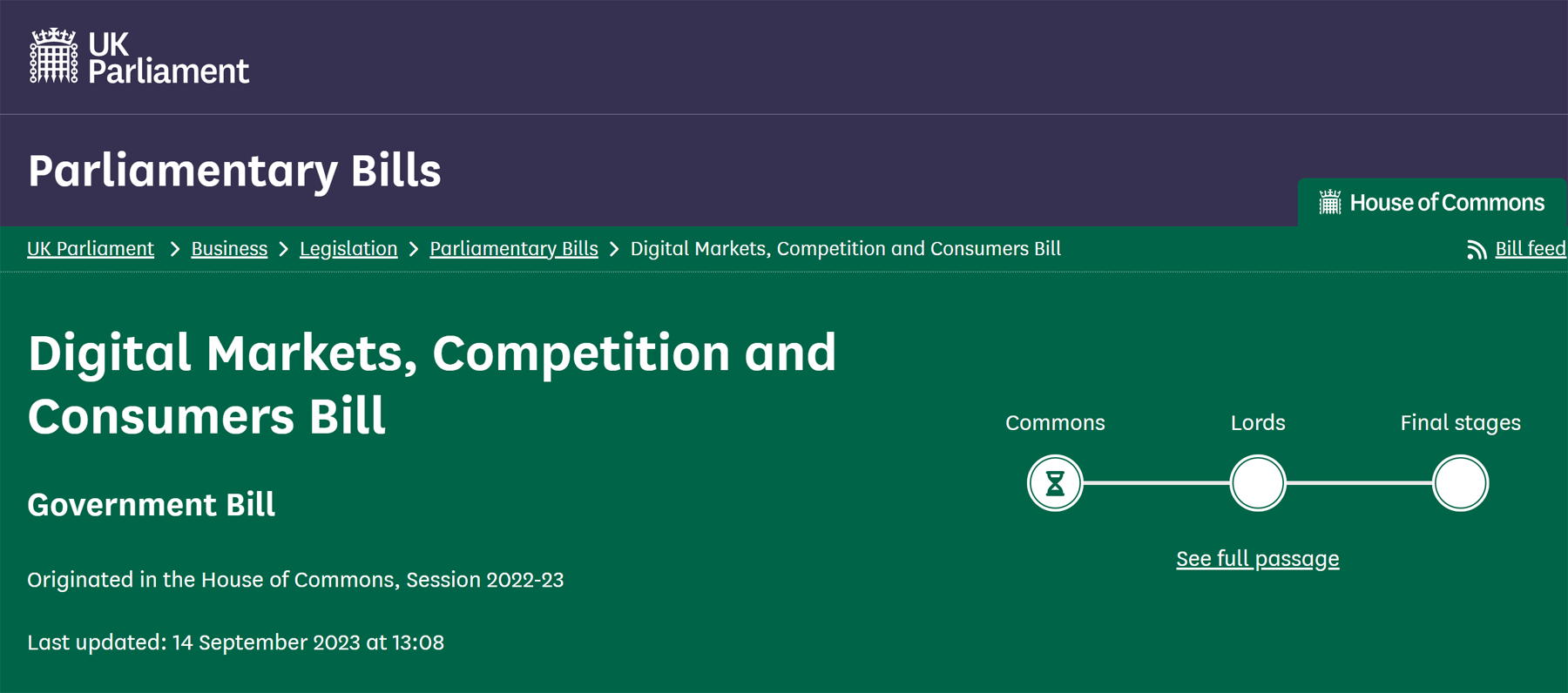 On 12 February, it was announced that The Body Shop UK was entering administration. With 199 shops across the country, if this leads to the collapse of the business, some 2000 jobs will be lost. The business has been struggling since 2020 and poor sales this last Christmas led the new owners, the pan-European alternative investment firm, Aurelius, to appoint administrators.
On 12 February, it was announced that The Body Shop UK was entering administration. With 199 shops across the country, if this leads to the collapse of the business, some 2000 jobs will be lost. The business has been struggling since 2020 and poor sales this last Christmas led the new owners, the pan-European alternative investment firm, Aurelius, to appoint administrators.
This could potentially begin an insolvency process that could result in the closure of some or all of the shops. This would spell the end of an iconic brand that, since its founding in 1976, has been associated with natural, ethically sourced and environmentally friendly products. Aurelius has already sold The Body Shop business in most of mainland Europe and in parts of Asia to an unnamed buyer. It is unclear what will happen to the approximately 2800 stores and 8000 employees in 70 countries outside the UK.
Origins of The Body Shop1
 The Body Shop was founded in 1976 and shot to fame in the 1980s. It stood for environmental awareness and an ethical approach to business. But its success had as much to do with what it sold as what it stood for. It sold natural cosmetics – Raspberry Ripple Bathing Bubbles and Camomile Shampoo – products that proved immensely popular with consumers.
The Body Shop was founded in 1976 and shot to fame in the 1980s. It stood for environmental awareness and an ethical approach to business. But its success had as much to do with what it sold as what it stood for. It sold natural cosmetics – Raspberry Ripple Bathing Bubbles and Camomile Shampoo – products that proved immensely popular with consumers.
Its profits increased from a little over £1m in 1985 (€1.7m) to approximately £65m (€77.5m) in 2012. Although profits then slipped, falling to €65.3m in 2014 and €54.8m in 2015, its profit growth in new markets over that same period was 12.4%.
Sales revenue, meanwhile, grew even more dramatically, from £4.9m in 1985 to approximately €967.2m in 2015. By 2015, Body Shop International had over 3100 stores, operating in 61 countries.
What made this success so remarkable is that The Body Shop did virtually no advertising. Its promotion stemmed largely from the activities and environmental campaigning of its founder, Anita Roddick, and the company’s uncompromising claim that it sold only ‘green’ products and conducted its business operations with high ethical standards. It actively supported green causes such as saving whales and protecting rainforests, and it refused to allow its products to be tested on animals. Perhaps most surprising in the world of big business at the time was its high-profile initiative ‘trade not aid’, whereby it claimed to pay ‘fair’ prices for its ingredients, especially those supplied by people in developing countries who were open to exploitation by large companies.
 The growth strategy of The Body Shop focused upon developing a distinctive and highly innovative product range, and at the same time identifying these products with major social issues of the day, such as the environment and animal rights.
The growth strategy of The Body Shop focused upon developing a distinctive and highly innovative product range, and at the same time identifying these products with major social issues of the day, such as the environment and animal rights.
Its initial expansion was based on a process of franchising, where individuals opened Body Shops which were then supplied by the company with its range of just 19 products. Then, in 1984 the company went public. Following its flotation, the share price rose from just 5p to a high of 370p in 1992.
In the 1990s, however, sales growth was less rapid. By 1998, earnings had collapsed by 90% and the share price fell to 117p. Shareholders forced Anita Roddick to step down as Chief Executive, but for a while she and her husband remained as co-chairs. In 2002, they stepped down as co-chairs, by which time profits had fallen to £20.4m. In 2003 she was awarded in knighthood and became Dame Anita Roddick. Sales then grew rapidly from 2004 to 2006 from €553m to €709m.
Acquisition of The Body Shop by L’Oréal
A dramatic event, however, occurred in 2006 when The Body Shop was sold to the French cosmetics giant, L’Oréal, which was 26% owned by Nestlé, The event resulted in the magazine Ethical Consumer downgrading The Body Shop’s ethical rating from 11 out of 20 to a mere 2.5 and calling for a boycott of the company. Three weeks after the sale, the daily BrandIndex recorded an 11 point drop in The Body Shop’s consumer satisfaction rating from 25 to 14.
There were several reasons for this. L’Oréal’s animal-testing policies conflicted with those of The Body Shop and L’Oréal was accused of being involved in price-fixing with other French perfume houses. L’Oréal’s part-owner, Nestlé, was also subject to various criticisms for ethical misconduct, including promoting formula milk rather than breast milk to mothers with babies in developing countries and using slave labour in cocoa farms in West Africa.
 Anita Roddick, however, believed that, by taking over The Body Shop, L’Oréal would develop a more ethical approach to business. Indeed, it did publicly recognise that it needed to develop its ethical and environmental policies.
Anita Roddick, however, believed that, by taking over The Body Shop, L’Oréal would develop a more ethical approach to business. Indeed, it did publicly recognise that it needed to develop its ethical and environmental policies.
L’Oréal adopted a new Code of Business Ethics in 2007 and gained some external accreditation for its approach to sustainability and ethics. It was ranked as one of the world’s 100 most ethical companies by Ethisphere in 2007 and, in 2016, it was again part of this list for the seventh time.
L’Oréal set itself three targets as part of its environmental strategy (2005–15), including a 50% reduction in greenhouse gas emissions, water consumption and waste per finished product unit. It made a donation of $1.2m to the US Environment Protection Agency to help bring an end to animal testing and, in March 2013, it announced a ‘total ban on the sale in Europe of any cosmetic product that was tested on animals or containing an ingredient that was tested on animals after this date.’ It also promised that ‘By 2020, we will innovate so that 100% of products have an environmental or social benefit.’
 Sadly, Anita Roddick died in 2007 and so was not able to witness these changes.
Sadly, Anita Roddick died in 2007 and so was not able to witness these changes.
L’Oréal also looked to inject greater finance into the company aimed at improving the marketing of products. In autumn 2006 a transactional website was launched and there have been larger press marketing campaigns. Profits continued to rise in 2006 and 2007, but fell back quite dramatically from €64m in 2007 to €36m in 2008 as recession hit the high streets. They fell by a further 8% in 2009, but significant growth was seen in the following three years: 2010, up 20.3% to €65.3m; 2011, up 4.3% to €68.1m; 2012, up 13.8% to €77.5m.
From L’Oréal to Natura to Aurelius to ?
 From 2013, the financial performance of The Body Shop deteriorated. Profits fell by 38% in 2016 to just €34m, with sales falling by 5%. In June 2017, L’Oréal announced that it had agreed to sell The Body Shop for €1bn (£877m) to Natura Cosmeticos, the largest Brazilian cosmetics business. Natura was awarded ‘B Corp’ status in 2014 as it met certain standards for environmental performance, accountability and transparency. In 2019, The Body Shop was separately certified as a B Corp.
From 2013, the financial performance of The Body Shop deteriorated. Profits fell by 38% in 2016 to just €34m, with sales falling by 5%. In June 2017, L’Oréal announced that it had agreed to sell The Body Shop for €1bn (£877m) to Natura Cosmeticos, the largest Brazilian cosmetics business. Natura was awarded ‘B Corp’ status in 2014 as it met certain standards for environmental performance, accountability and transparency. In 2019, The Body Shop was separately certified as a B Corp.
Initial indications for The Body Shop under its new owners seemed good, with net revenue rising by 36% in 2018 and 6.3% in 2019. 2020 saw strong growth in sales, with a rise in online sales more than offsetting the effect of store closures during the pandemic. Its market share peaked in 2020 at 1.4%. However, with the cost-of-living crisis following the pandemic and the Russian invasion of Ukraine, many consumers switched to cheaper brands and cheaper outlets, such as Boots and Superdrug, sacrificing environmental and ethical concerns in favour of value for money. As a result, The Body Shop’s market share fell, dropping to 0.8% in 2022 and not picking up in 2023.
This prompted Natura to sell the business to Aurelius. Aurelius hoped to revitalise The Body Shop by promoting its core values and through partnerships or concessions with major retailers, such as John Lewis or Next. However, as we saw above, after a poor Christmas and a weaker capital base and higher cost commitments than initially thought by Aurelius, the new owner filed to put The Body Shop into administration.
What will come of the administration process remains to be seen. Perhaps some of the more profitable stores will be saved; perhaps there will be an expansion of the online business; perhaps partnerships will be sought with major retailers. We shall see.
1 Some of this section is based on Case Study 9.3 from Economics (11th edition).
Videos
Articles
- Aurelius Acquires Iconic Global Beauty Brand and Retailer, The Body Shop
Aurelius news (14/11/23)
- Back to the future? What’s next for the Body Shop brand
Marketing Week, Niamh Carroll (14/11/23)
- The Body Shop appoints administrators for UK business
Financial Times, Laura Onita and Will Louch (13/2/24)
- The Body Shop set to appoint administrators for UK arm
Financial Times, Laura Onita (10/2/24)
- The Body Shop collapses into administration in UK
The Guardian, Sarah Butler and Rob Davies (13/2/24)
- The Body Shop UK in administration – what went wrong?
Sky News, James Sillars (13/2/24)
- Body Shop UK jobs and stores at risk in race to save firm
BBC News (13/2/24)
- From cult status to closure fears — what happened to The Body Shop?
CBC News, Natalie Stechyson (12/2/24)
- Headed for administration, why did The Body Shop fail?
Startups, Richard Parris (12/2/24)
- Comment: The Body Shop’s woes hit just as it should be at its most relevant
TheIndustry.beauty, Lauretta Roberts (13/2/24)
- The collapse of The Body Shop shows that ‘ethical’ branding is not a free pass to commercial success
The Conversation, Kokho Jason Sit (15/2/24)
Questions
- What assumptions did The Body Shop made about the ‘rational consumer’?
- How would you describe the aims of The Body Shop (a) in the early days under Anita Roddick; (b) under L’Oréal; (c) under Aurelius?
- How has The Body Shop’s economic performance been affected by its attitudes towards ethical issues?
- What has Lush done right that The Body Shop has not?
- What will the administrators seek to do?
- Find out what has happened to The Body Shop outlets in mainland Europe?
 Have you ever wondered how your job affects your happiness? We all know that not all jobs are created equal. Some are awesome, while others … not so much. Well, it turns out that employment status and the type of work you do can have a big impact on how you feel – especially in developing countries where labour markets are usually tighter and switching between jobs can be more difficult.
Have you ever wondered how your job affects your happiness? We all know that not all jobs are created equal. Some are awesome, while others … not so much. Well, it turns out that employment status and the type of work you do can have a big impact on how you feel – especially in developing countries where labour markets are usually tighter and switching between jobs can be more difficult.
A recent study by Carmichael, Darko and Vasilakos (2021) uses survey data from Ethiopia, Peru, India and Vietnam to answer this very question. The study found that the quality of work is a big deal when it comes to how young people feel. Not all jobs are ‘good jobs’ that automatically make you feel great. Although your wellbeing is likely to be higher when you’re in employment than when you’re not, there are certain job attributes that can push that ‘employment premium’ up or down. This is especially important to understand in countries like many in sub-Saharan Africa, where there aren’t many formal jobs, and people often end up overqualified for what they do.
What job attributes lead to higher wellbeing?
 What then are the job attributes that are correlated with higher levels of wellbeing? The first is money: Okay, we know money can’t buy happiness, but it can certainly make life easier. We were therefore hardly surprised to find a positive and statistically significant association between hourly earnings and wellbeing.
What then are the job attributes that are correlated with higher levels of wellbeing? The first is money: Okay, we know money can’t buy happiness, but it can certainly make life easier. We were therefore hardly surprised to find a positive and statistically significant association between hourly earnings and wellbeing.
We were also not surprised to find that a ‘poor working environment’ has a strong and highly significant negative effect on wellbeing.
Finally, feeling proud of your work is also found to be a strongly significant determinant of your wellbeing. After all, people tend to excel in things they like doing, which is probably part of the ‘transmission mechanism’ between ‘work pride’ and ‘subjective wellbeing’.
 Which one of these attributes did you think had the greatest effect on wellbeing? Let me guess, many of you will say ‘earnings’. But then you would be wrong. Earnings were indeed positively associated with wellbeing and statistically significant at just about the 10% level, whereas work pride was very strongly statistically significant at the 1% level and had an effect on wellbeing that was four times greater than hourly earnings.
Which one of these attributes did you think had the greatest effect on wellbeing? Let me guess, many of you will say ‘earnings’. But then you would be wrong. Earnings were indeed positively associated with wellbeing and statistically significant at just about the 10% level, whereas work pride was very strongly statistically significant at the 1% level and had an effect on wellbeing that was four times greater than hourly earnings.
Putting yourself in a poor working environment on the other hand would reduce your wellbeing by almost twice as much as the earnings coefficient.
Policy implications
What does all this mean for policy-makers? If we want to make life better for young people in low-income countries, we need to tackle the problems from multiple angles.
 First, young people need to be helped to get the skills they need for the job market. This can be done through things like training programmes and apprenticeships. However, not all of these programmes are created equal. Some have great results, and others not so much.
First, young people need to be helped to get the skills they need for the job market. This can be done through things like training programmes and apprenticeships. However, not all of these programmes are created equal. Some have great results, and others not so much.
But that’s not the whole story. In many countries, there’s a massive informal job market. It’s a place where people work but often don’t have the rights or protections that formal employees do. So, even if young people get trained, they might not find the ‘good’ jobs they’re hoping for.
Changes also need to be made on a much bigger scale. This often includes decentralising public investment to include rural areas, improving infrastructure, and encouraging private investment. Strengthening labour market rules and social protection can help too, by making sure that work is safe and fair.
In a nutshell, where you work and what kind of work you do can make a big difference to how you feel.
Conclusions
If policy-makers want to help young people in low-income countries, they need both to give them the skills they require and to create better job opportunities. But policy-makers also need to make bigger changes to the way things work, like boosting production and making sure jobs are safe and fair.
In the end, it’s about making life better for young people around the world. Let’s keep working on it!
Articles
- Well-being and employment of young people in Ethiopia, India, Peru and Vietnam: Is work enough?
Development Policy Review, Fiona Carmichael, Christian K. Darko and Nicholas Vasilakos (18/5/21)
- The search for ‘meaning’ at work
BBC Worklife, Kate Morgan (7/9/22)
- Job Satisfaction Is Rising: What’s Behind The Surprising Tend
Forbes, Tracy Brower (4/6/23)
- Young workers are embracing AI, job satisfaction rising: 2023 Young Generation in Tech report
Silicon Canals (4/10/23)
- ‘These jobs can be respectable too’: Why youths in China are abandoning white-collar jobs for ‘light labor’
CNBC, Goh Chiew Tong (6/6/23)
- Does Work Make You Happy? Evidence from the World Happiness Report
Harvard Business Review, Jan-Emmanuel De Neve and George Ward (20/3/17)
- Worker well-being is in demand as organizational culture shifts
American Psychological Association, Monitor on Psychology, Heather Stringer (1/1/23)
- Understanding children’s work and youth employment outcomes in Indonesia
Understanding Children’s Work (UCW) Programme, Villa Aldobrandini and V. Panisperna (June 2012)
- Where are We with Young People’s Wellbeing? Evidence from Nigerian Demographic and Health Surveys 2003–2013
Social Indicators Research, pp.803–33, Boniface Ayanbekongshie Ushie and Ekerette Emmanuel Udoh (November 2016)
- Employment Status and Well-Being Among Young Individuals. Why Do We Observe Cross-Country Differences?
Social Indicators Research, Dominik Buttler (29/6/22)
- Employment Mismatches Drive Expectational Earnings Errors among Mozambican Graduates
The World Bank Economic Review, Sam Jones, Ricardo Santos and Gimelgo Xirinda (27/7/23)
- Youth Employment and Skills Development in The Gambia
World Bank Working Paper 217, Nathalie Lahire, Richard Johanson and Ryoko Tomita Wilcox (2011)
Questions
- How does the quality of work impact the happiness and wellbeing of young people in low- and middle-income countries (LMICs), and why is this significant in the context of job opportunities in sub-Saharan Africa?
- What are some potential solutions and strategies discussed in the article for improving the wellbeing of young people in LMICs, particularly in the context of employment and job opportunities?
- Have you ever experienced a job that significantly (positively or negatively) impacted your wellbeing or happiness? Reflect on your experience and how it influenced your overall life satisfaction?
- How is AI likely to affect the wellbeing of young professional workers?
- How is the pandemic likely to have affected job satisfaction?
 Policy makers have become increasingly concerned about what the US Federal Trade Commission (FTC) describe as ‘negative option marketing’. These are marketing deals that contain the following feature:
Policy makers have become increasingly concerned about what the US Federal Trade Commission (FTC) describe as ‘negative option marketing’. These are marketing deals that contain the following feature:
a term or condition that allows a seller to interpret a customer’s silence, or failure to take affirmative action, as an acceptance of an offer.
For example, companies such as Amazon, Apple, Spotify and Netflix may offer students a 3-month free trial or 3-month introductory offer (at a special lower price) for movie and music streaming services. However, many of these subscription contracts contain an example of negative option marketing – auto renewal clauses.
Problems with auto-renewal contracts
The inclusion of an auto-renewal clause means that if a customer fails to cancel the subscription at the end of the three-month period, the subscription automatically reverts to its full price. The full-price contract then continues to roll-over indefinitely unless the customer takes a pre-specified action to terminate the deal. Inattentive consumers could end up paying subscription prices that far exceed their willingness to pay.
 Auto-renewal contracts are not just an issue with free trials/introductory offers. Some people may purchase subscription contracts at the full price and then forget about them. These consumers could end up paying fees for months after they have effectively stopped using the service.
Auto-renewal contracts are not just an issue with free trials/introductory offers. Some people may purchase subscription contracts at the full price and then forget about them. These consumers could end up paying fees for months after they have effectively stopped using the service.
Another potential problem with the use of auto-renewal contracts, is businesses deliberately making the cancellation process more complex than it needs to be. In many cases it takes just one click to sign up for the subscription, but multiple clicks through a series of menus to cancel. Some businesses do not provide consumers with the option to cancel online and, instead, they are forced to phone a number that is often very busy.
Effects on consumer welfare
To what extent do these problems caused by auto-renewal reduce consumer welfare? What evidence do we have?
 Research by Citizens Advice found that just over one in four people (26 per cent) had signed up to a subscription by accident. 58 per cent of this group forgot to cancel a free trial, while 21 per cent did not realise that the free trial would automatically roll-over to a full-price subscription. This seems to be a particular issue for those on low incomes with 46 per cent of people on Universal Credit signing up to a subscription by accident.
Research by Citizens Advice found that just over one in four people (26 per cent) had signed up to a subscription by accident. 58 per cent of this group forgot to cancel a free trial, while 21 per cent did not realise that the free trial would automatically roll-over to a full-price subscription. This seems to be a particular issue for those on low incomes with 46 per cent of people on Universal Credit signing up to a subscription by accident.
Analysis by the Department for Business and Trade (DBT) has tried to estimate the value of these unwanted subscriptions. The study found that consumers spent £602 million on unwanted subscriptions where a free or reduced-price trial had been rolled over to the full price. The same study also found that £573 million was spent on subscriptions that people had forgotten about.
One in five people in the Citizens Advice study who tried to cancel a subscription found the process difficult. The DBT estimates that cancellation difficulties led to £382 million being spent on unwanted subscriptions.
UK Government response
 In response to these findings, the government introduced the Digital Markets, Competition and Consumers Bill into Parliament in April 2023.
In response to these findings, the government introduced the Digital Markets, Competition and Consumers Bill into Parliament in April 2023.
Provisions in the Bill seek to standardise the information that businesses must provide consumers before they sign up for subscription contracts. For example, in the future, firms will have to display prominently (a) any auto-renewal provisions, (b) whether the price increases after a specified period, (c) details about how consumers can terminate the contract and (d) cooling-off periods.
The Bill also stipulates that businesses will have to provide consumers with reminders when a free/reduced-price trial period is about to end and/or a subscription is about to renew automatically. They must also make it easy to exit contracts and remove any unnecessary steps.
The government initially considered an additional measure that would force businesses to provide consumers with the option to take out any subscription without auto-renewal.
Citizens Advice strongly supported this policy. They argued that not only should consumers be given the choice, but that auto-renewal should not be the default i.e. people would have to opt-in to auto-renewal subscriptions.
However, after the consultation process for the Bill, the government decided against introducing this additional measure. Businesses have also argued that the other elements of the policy are too prescriptive.
Articles
Government documents
Questions
- Outline some theories from behavioural economics that might help to explain why people sometimes end up with unwanted subscriptions.
- Discuss some of the potential benefits of auto-renewal subscriptions for both consumers and firms.
- Using behavioural economic theory, explain some of the potential disadvantages for businesses of using auto-renewal subscriptions.
- When businesses deliberately make the cancellation process more complex than it needs to be, it is referred to as an example of ‘sludge’. Explain the meaning of ‘sludge’ in more detail, referring to some different examples in your answer.
- What difference do you think it would make to the number of people signing up for auto-renewal subscriptions if you had to opt-in as opposed to opting out? Explain your answer.
- Another policy would be to force firms to cancel subscription contracts if there is evidence that consumers have not used the service for a long period of time. Discuss some of the advantages and disadvantages of this measure.
- Explain what are meant by ‘dark patterns’. How may the choice architecture on some sites actually hinder consumer choice?
 Imagine a situation where you are thinking of buying a good and so you go to an e-commerce marketplace such as Amazon, eBay, Etsy or Onbuy. How confident are you about the quality of the different brands/makes that are listed for sale on these digital platforms? How do you choose which product to buy? Is the decision strongly influenced by customer reviews and rating?
Imagine a situation where you are thinking of buying a good and so you go to an e-commerce marketplace such as Amazon, eBay, Etsy or Onbuy. How confident are you about the quality of the different brands/makes that are listed for sale on these digital platforms? How do you choose which product to buy? Is the decision strongly influenced by customer reviews and rating?
When a customer is choosing what to buy it raises an interesting question: to what extent can the true quality of the different goods/services be observed at the time of purchase? Although perfect observability is highly unlikely, the level of consumer information about a product’s true quality will vary between different types of transaction.
For example, when consumers can physically inspect and test/try a product in a shop, it can help them to make more accurate judgements about its quality and condition. This poses a problem for online sellers of high-quality versions of a good. Without the ability to inspect the item physically, consumers may be unsure about its characteristics. They may worry that the online description provided by the seller deliberately misrepresents the true quality of the item.
Consumers may have other concerns about the general reliability of online sellers. For example, in comparison to buying the product from a physical store, consumers may worry that:
- They will have to wait longer to receive the good. In many cases, when consumers purchase a product from a high-street store, they can walk away with the item and start using it straight away. When purchasing on line, they may end up waiting weeks or even longer before the product is finally delivered.
- It will be more difficult to return the product and get a refund.
- They are more likely to come across fraudulent sellers who have set-up a fake website.
This greater level of uncertainty about the true characteristics of the product and the general reliability of the seller will have a negative impact on consumers’ willingness to pay for all goods. This impact is likely to be particularly strong for high-quality versions of a product. If consumers’ willingness to pay falls below the reservation price of many sellers of high-quality goods, then the market could suffer from adverse selection and market failure.
Are there any within-market arrangements that could help deal with this issue? One possibility is for sellers to signal the quality of their products by posting consumer ratings and reviews. If consumers see that a product has many positive ratings, then this will increase their confidence in the quality of the product and so increase their willingness to pay. This could then reduce both levels of asymmetric information and the chances of adverse selection occurring in the market,
There is survey evidence that many people do read consumer reviews when choosing products on line and are heavily influenced by the ratings.
The problem of fake reviews
 However, when consumers look at these reviews can they be sure that they reflect consumers’ honest opinions and/or actual experience of using the good or service? Firms may have an incentive to manipulate and post fake reviews. For example, they could:
However, when consumers look at these reviews can they be sure that they reflect consumers’ honest opinions and/or actual experience of using the good or service? Firms may have an incentive to manipulate and post fake reviews. For example, they could:
- Deliberately fail to display negative reviews on their website while claiming that all reviews are published.
- Use internet bots to post thousands of automated reviews.
- Take positive reviews from competitors’ websites and post them on their own website.
- Pay some customers and/or employees to write and post 5-star reviews on their own website.
- Pay some customers and/or employees to write and post 1-star reviews on their competitors’ websites.
- Set up a website that they claim is independent and use it to provide positive endorsements of their own products.
If the benefits of this type of behaviour outweigh the costs, then we would expect to see fake reviews posted on websites. If their use becomes widespread, then the value of posting genuine reviews will fall. The market may then settle into what economists call a ‘pooling equilibrium’.
What evidence do we have on the posting of fake reviews? Given their nature, it is difficult to collect reliable data and there are large variations in the reported figures. One recent study found evidence of fake reviews being purchased and posted for approximately 1500 products on Amazon.
Can consumers screen reviews and identify those that are more likely to be fake? The following are some tell-tale signs.
- Products that receive a large number of very positive reviews over a short period (i.e. a few days). There are then long periods before the product receives another large number of positive reviews.
- A high percentage of 5-star reviews. Two, three and four start reviews are more likely to be genuine.
- Reviews that specifically mention a rival firm’s products.
- Reviewers who have given very high ratings to large number of different products over a short period of time.
- Reviews that include photos/videos.
Competition authorities around the world have been investigating the issue and the Competition and Markets Authority has announced plans to introduce new laws that make the purchasing and posting of fake reviews illegal.
Articles
Questions
- Outline different types of asymmetric information and explain the difference between adverse selection and moral hazard.
- Using a diagram, explain the impact of uncertainty over the quality of a good on consumers’ willingness to pay.
- Will consumers always face greater uncertainty over quality when purchasing goods on line rather than visiting the high street? Discuss your answer making reference to some specific examples.
- Using diagrams, explain how a market for high-quality versions of a good might collapse if there is asymmetric information. Using price elasticity of supply, explain the circumstances when the market is more likely to collapse.
- Discuss some of the benefits and costs for a firm of purchasing and posting fake reviews.
 When building supply and demand models, the assumption is usually made that both producers and consumers act in a ‘rational’ way to achieve the best possible outcomes. As far as producers are concerned, this would mean attempting to maximise profit. As far as consumers are concerned, it would mean attempting to achieve the highest satisfaction (utility) from their limited budget. This involves a cost–benefit calculation, where people weigh up the costs and benefits of allocating their money between different goods and services.
When building supply and demand models, the assumption is usually made that both producers and consumers act in a ‘rational’ way to achieve the best possible outcomes. As far as producers are concerned, this would mean attempting to maximise profit. As far as consumers are concerned, it would mean attempting to achieve the highest satisfaction (utility) from their limited budget. This involves a cost–benefit calculation, where people weigh up the costs and benefits of allocating their money between different goods and services.
For consumers to act rationally, the following assumptions are made:
- Consumer choices are made independently. Their individual choices and preferences are not influenced by other people’s, nor do their choices and preferences impact on other people’s choices.
- The consumer’s preferences are consistent and fixed.
- Consumers have full information about the products available and alternatives to them.
- Given the information they have and the preferences they hold, consumers will then make an optimal choice.
 Black Friday can be seen as a perfect occasion for consumers to get their hands on a bargain. It is an opportunity to fulfil a rational need, for example if you were needing to replace a household appliance but were waiting until there was a good deal before committing to a purchase.
Black Friday can be seen as a perfect occasion for consumers to get their hands on a bargain. It is an opportunity to fulfil a rational need, for example if you were needing to replace a household appliance but were waiting until there was a good deal before committing to a purchase.
The assumption that people act rationally has been at the forefront of economic theory for decades. However, this has been questioned by the rise in behavioural economics. Rather than assuming that all individuals are ‘rational maximisers’ and conduct a cost–benefit analysis for every decision, behavioural economists mix psychology with economics by focusing on the human. As humans, we do not always behave rationally but, instead, we act under bounded rationality.
As economic agents, we make different decisions depending on our emotional state that differ from the ‘rational choice’ assumption. We are also influenced by our social networks and often make choices that provide us with immediate gratification. Given this, Black Friday can also be viewed as a great opportunity to fall prey to irrational and emotional shopping behaviours.
Black Friday originated in the USA and is the day after Thanksgiving. During this annual shopping holiday, retailers typically offer steep discounts to kick off the holiday season. The Black Friday shopping phenomenon is less than a decade old in the UK but it’s now an established part of the pre-Christmas retail calendar. Between 2010 and 2013, Black Friday gradually built up momentum in the UK. In 2014, Black Friday became the peak pre-Christmas online sales day and many online retailers haven’t looked back.
 Arguably, from a behavioural economist’s perspective, the big problem with Black Friday is that all the reasons consumers possibly have to partake can be largely illusory. Consumers are bombarded with the promise of one-off deals, large discounts, scarce products, and an opportunity to get their holiday shopping done all at once. However, on Black Friday, our rational decision-making faculties are tested, just as stores are trying their hardest to maximise consumers’ mistakes.
Arguably, from a behavioural economist’s perspective, the big problem with Black Friday is that all the reasons consumers possibly have to partake can be largely illusory. Consumers are bombarded with the promise of one-off deals, large discounts, scarce products, and an opportunity to get their holiday shopping done all at once. However, on Black Friday, our rational decision-making faculties are tested, just as stores are trying their hardest to maximise consumers’ mistakes.
There are many ‘behavioural traps’ that consumers often fall into. The following two are most likely to occur on Black Friday:
- Scarcity and loss aversion. Shoppers may fear that they will miss out on the best sales deals available if they don’t buy it now. Retailers commonly spark consumers’ interest by highlighting limited stocks available for a limited time only, which raises the perceived value of these goods. This sense of scarcity can further trigger the need to buy now, increasing the ‘Fear of Missing Out’. Consumers therefore need to ask themselves if they are really missing out if they don’t buy it now? And is the discount worth spending the money today, or is there something else I should be spending it on or saving for?
- Sunk cost fallacy. Once consumers have started to invest, they often struggle to close out investments that prove unprofitable. On Black Friday, customers have already made the initial investment of getting up early, driving to the shops, finding parking and waiting in a queue, before they have purchased anything. Therefore, they will be inclined to buy more than they initially went for. It is important therefore to think about each purchase in isolation.
 This year, however, there is also the added complication of the rising cost of living. Whilst this may deter some consumers from unnecessary, impulse purchases, some consumers are using Black Friday as an opportunity to stock up on expected future purchases, hedging against likely price rises over the coming months.
This year, however, there is also the added complication of the rising cost of living. Whilst this may deter some consumers from unnecessary, impulse purchases, some consumers are using Black Friday as an opportunity to stock up on expected future purchases, hedging against likely price rises over the coming months.
It is thought that more consumers will be looking for a combination of high quality but low price to make sure their purchases are affordable and can last for a long time. According to PwC, many consumers have closely monitored their favourite brands in anticipation that big-ticket electronics, more pricey winter wear or Christmas stocking fillers will be discounted. Consumers are also in search of bargains more than ever given rising inflation. This would suggest a shift in attitude, meaning consumers will be more aware of what they cannot afford rather than giving in to emotional temptation brought on by Black Friday.
Retailers are fully aware of the cognitive biases that surround Black Friday and take full advantage of them. ‘Cyber Monday’ follows right after Black Friday, giving retailers an extra opportunity for them to keep those ‘urgent’ or ‘unmissable’ sales going and increase their revenues.
 Black Friday is one of the biggest shopping days of the year. However, the way retailers approach it is growing increasingly mixed. Stores such as Amazon, Argos, Currys and John Lewis have started offering Black Friday deals much earlier in the month, leading some to refer to the event as ‘Black November’. Other stores, such as M&S and Next, didn’t take part at all this year.
Black Friday is one of the biggest shopping days of the year. However, the way retailers approach it is growing increasingly mixed. Stores such as Amazon, Argos, Currys and John Lewis have started offering Black Friday deals much earlier in the month, leading some to refer to the event as ‘Black November’. Other stores, such as M&S and Next, didn’t take part at all this year.
Ultimately, Consumers can use insights from behavioural economics to empower them to make more rational decisions in such circumstances: ones that better align with their individual budgets. Nevertheless, the Black Friday sales mania can trigger our deepest emotional and cognitive responses that lead to unnecessary spending.
Articles
Video
Questions
- Discuss what is meant by the term ‘rational consumer’. Is it a useful generalisation about the way consumers behave?
- Discuss what is meant by the term ‘rational producer’. Is it a useful generalisation about the way firms behave?
- What is cost–benefit analysis? What is the procedure used in conducting a cost–benefit analysis?
- In addition to scarcity and loss aversion and the sunk cost fallacy, are there any other reasons why consumers may not always act rationally?
- Are people likely to be more ‘rational’ about online Black Friday purchases than in-store ones? Explain.
 On 12 February, it was announced that The Body Shop UK was entering administration. With 199 shops across the country, if this leads to the collapse of the business, some 2000 jobs will be lost. The business has been struggling since 2020 and poor sales this last Christmas led the new owners, the pan-European alternative investment firm, Aurelius, to appoint administrators.
On 12 February, it was announced that The Body Shop UK was entering administration. With 199 shops across the country, if this leads to the collapse of the business, some 2000 jobs will be lost. The business has been struggling since 2020 and poor sales this last Christmas led the new owners, the pan-European alternative investment firm, Aurelius, to appoint administrators. The Body Shop was founded in 1976 and shot to fame in the 1980s. It stood for environmental awareness and an ethical approach to business. But its success had as much to do with what it sold as what it stood for. It sold natural cosmetics – Raspberry Ripple Bathing Bubbles and Camomile Shampoo – products that proved immensely popular with consumers.
The Body Shop was founded in 1976 and shot to fame in the 1980s. It stood for environmental awareness and an ethical approach to business. But its success had as much to do with what it sold as what it stood for. It sold natural cosmetics – Raspberry Ripple Bathing Bubbles and Camomile Shampoo – products that proved immensely popular with consumers. The growth strategy of The Body Shop focused upon developing a distinctive and highly innovative product range, and at the same time identifying these products with major social issues of the day, such as the environment and animal rights.
The growth strategy of The Body Shop focused upon developing a distinctive and highly innovative product range, and at the same time identifying these products with major social issues of the day, such as the environment and animal rights. Anita Roddick, however, believed that, by taking over The Body Shop, L’Oréal would develop a more ethical approach to business. Indeed, it did publicly recognise that it needed to develop its ethical and environmental policies.
Anita Roddick, however, believed that, by taking over The Body Shop, L’Oréal would develop a more ethical approach to business. Indeed, it did publicly recognise that it needed to develop its ethical and environmental policies. Sadly, Anita Roddick died in 2007 and so was not able to witness these changes.
Sadly, Anita Roddick died in 2007 and so was not able to witness these changes. From 2013, the financial performance of The Body Shop deteriorated. Profits fell by 38% in 2016 to just €34m, with sales falling by 5%. In June 2017, L’Oréal announced that it had agreed to sell The Body Shop for €1bn (£877m) to Natura Cosmeticos, the largest Brazilian cosmetics business. Natura was awarded ‘B Corp’ status in 2014 as it met certain standards for environmental performance, accountability and transparency. In 2019, The Body Shop was separately certified as a B Corp.
From 2013, the financial performance of The Body Shop deteriorated. Profits fell by 38% in 2016 to just €34m, with sales falling by 5%. In June 2017, L’Oréal announced that it had agreed to sell The Body Shop for €1bn (£877m) to Natura Cosmeticos, the largest Brazilian cosmetics business. Natura was awarded ‘B Corp’ status in 2014 as it met certain standards for environmental performance, accountability and transparency. In 2019, The Body Shop was separately certified as a B Corp. The Body Shop begins filing for administration
The Body Shop begins filing for administration Hundreds of jobs at risk as The Body Shop goes into administration
Hundreds of jobs at risk as The Body Shop goes into administration The body shop’s UK business in peril
The body shop’s UK business in peril The Body Shop UK Enters Administration
The Body Shop UK Enters Administration Have you ever wondered how your job affects your happiness? We all know that not all jobs are created equal. Some are awesome, while others … not so much. Well, it turns out that employment status and the type of work you do can have a big impact on how you feel – especially in developing countries where labour markets are usually tighter and switching between jobs can be more difficult.
Have you ever wondered how your job affects your happiness? We all know that not all jobs are created equal. Some are awesome, while others … not so much. Well, it turns out that employment status and the type of work you do can have a big impact on how you feel – especially in developing countries where labour markets are usually tighter and switching between jobs can be more difficult. What then are the job attributes that are correlated with higher levels of wellbeing? The first is money: Okay, we know money can’t buy happiness, but it can certainly make life easier. We were therefore hardly surprised to find a positive and statistically significant association between hourly earnings and wellbeing.
What then are the job attributes that are correlated with higher levels of wellbeing? The first is money: Okay, we know money can’t buy happiness, but it can certainly make life easier. We were therefore hardly surprised to find a positive and statistically significant association between hourly earnings and wellbeing. Which one of these attributes did you think had the greatest effect on wellbeing? Let me guess, many of you will say ‘earnings’. But then you would be wrong. Earnings were indeed positively associated with wellbeing and statistically significant at just about the 10% level, whereas work pride was very strongly statistically significant at the 1% level and had an effect on wellbeing that was four times greater than hourly earnings.
Which one of these attributes did you think had the greatest effect on wellbeing? Let me guess, many of you will say ‘earnings’. But then you would be wrong. Earnings were indeed positively associated with wellbeing and statistically significant at just about the 10% level, whereas work pride was very strongly statistically significant at the 1% level and had an effect on wellbeing that was four times greater than hourly earnings. First, young people need to be helped to get the skills they need for the job market. This can be done through things like training programmes and apprenticeships. However, not all of these programmes are created equal. Some have great results, and others not so much.
First, young people need to be helped to get the skills they need for the job market. This can be done through things like training programmes and apprenticeships. However, not all of these programmes are created equal. Some have great results, and others not so much. Policy makers have become increasingly concerned about what the US Federal Trade Commission (FTC) describe as ‘negative option marketing’. These are marketing deals that contain the following feature:
Policy makers have become increasingly concerned about what the US Federal Trade Commission (FTC) describe as ‘negative option marketing’. These are marketing deals that contain the following feature: Auto-renewal contracts are not just an issue with free trials/introductory offers. Some people may purchase subscription contracts at the full price and then forget about them. These consumers could end up paying fees for months after they have effectively stopped using the service.
Auto-renewal contracts are not just an issue with free trials/introductory offers. Some people may purchase subscription contracts at the full price and then forget about them. These consumers could end up paying fees for months after they have effectively stopped using the service.  Research by Citizens Advice found that just over one in four people (26 per cent) had signed up to a subscription by accident. 58 per cent of this group forgot to cancel a free trial, while 21 per cent did not realise that the free trial would automatically roll-over to a full-price subscription. This seems to be a particular issue for those on low incomes with 46 per cent of people on Universal Credit signing up to a subscription by accident.
Research by Citizens Advice found that just over one in four people (26 per cent) had signed up to a subscription by accident. 58 per cent of this group forgot to cancel a free trial, while 21 per cent did not realise that the free trial would automatically roll-over to a full-price subscription. This seems to be a particular issue for those on low incomes with 46 per cent of people on Universal Credit signing up to a subscription by accident.  In response to these findings, the government introduced the Digital Markets, Competition and Consumers Bill into Parliament in April 2023.
In response to these findings, the government introduced the Digital Markets, Competition and Consumers Bill into Parliament in April 2023. Imagine a situation where you are thinking of buying a good and so you go to an e-commerce marketplace such as Amazon, eBay, Etsy or Onbuy. How confident are you about the quality of the different brands/makes that are listed for sale on these digital platforms? How do you choose which product to buy? Is the decision strongly influenced by customer reviews and rating?
Imagine a situation where you are thinking of buying a good and so you go to an e-commerce marketplace such as Amazon, eBay, Etsy or Onbuy. How confident are you about the quality of the different brands/makes that are listed for sale on these digital platforms? How do you choose which product to buy? Is the decision strongly influenced by customer reviews and rating? However, when consumers look at these reviews can they be sure that they reflect consumers’ honest opinions and/or actual experience of using the good or service? Firms may have an incentive to manipulate and post fake reviews. For example, they could:
However, when consumers look at these reviews can they be sure that they reflect consumers’ honest opinions and/or actual experience of using the good or service? Firms may have an incentive to manipulate and post fake reviews. For example, they could: When building supply and demand models, the assumption is usually made that both producers and consumers act in a ‘rational’ way to achieve the best possible outcomes. As far as producers are concerned, this would mean attempting to maximise profit. As far as consumers are concerned, it would mean attempting to achieve the highest satisfaction (utility) from their limited budget. This involves a cost–benefit calculation, where people weigh up the costs and benefits of allocating their money between different goods and services.
When building supply and demand models, the assumption is usually made that both producers and consumers act in a ‘rational’ way to achieve the best possible outcomes. As far as producers are concerned, this would mean attempting to maximise profit. As far as consumers are concerned, it would mean attempting to achieve the highest satisfaction (utility) from their limited budget. This involves a cost–benefit calculation, where people weigh up the costs and benefits of allocating their money between different goods and services. Black Friday can be seen as a perfect occasion for consumers to get their hands on a bargain. It is an opportunity to fulfil a rational need, for example if you were needing to replace a household appliance but were waiting until there was a good deal before committing to a purchase.
Black Friday can be seen as a perfect occasion for consumers to get their hands on a bargain. It is an opportunity to fulfil a rational need, for example if you were needing to replace a household appliance but were waiting until there was a good deal before committing to a purchase.  Arguably, from a behavioural economist’s perspective, the big problem with Black Friday is that all the reasons consumers possibly have to partake can be largely illusory. Consumers are bombarded with the promise of one-off deals, large discounts, scarce products, and an opportunity to get their holiday shopping done all at once. However, on Black Friday, our rational decision-making faculties are tested, just as stores are trying their hardest to maximise consumers’ mistakes.
Arguably, from a behavioural economist’s perspective, the big problem with Black Friday is that all the reasons consumers possibly have to partake can be largely illusory. Consumers are bombarded with the promise of one-off deals, large discounts, scarce products, and an opportunity to get their holiday shopping done all at once. However, on Black Friday, our rational decision-making faculties are tested, just as stores are trying their hardest to maximise consumers’ mistakes. This year, however, there is also the added complication of the rising cost of living. Whilst this may deter some consumers from unnecessary, impulse purchases, some consumers are using Black Friday as an opportunity to stock up on expected future purchases, hedging against likely price rises over the coming months.
This year, however, there is also the added complication of the rising cost of living. Whilst this may deter some consumers from unnecessary, impulse purchases, some consumers are using Black Friday as an opportunity to stock up on expected future purchases, hedging against likely price rises over the coming months. Black Friday is one of the biggest shopping days of the year. However, the way retailers approach it is growing increasingly mixed. Stores such as Amazon, Argos, Currys and John Lewis have started offering Black Friday deals much earlier in the month, leading some to refer to the event as ‘Black November’. Other stores, such as M&S and Next, didn’t take part at all this year.
Black Friday is one of the biggest shopping days of the year. However, the way retailers approach it is growing increasingly mixed. Stores such as Amazon, Argos, Currys and John Lewis have started offering Black Friday deals much earlier in the month, leading some to refer to the event as ‘Black November’. Other stores, such as M&S and Next, didn’t take part at all this year.